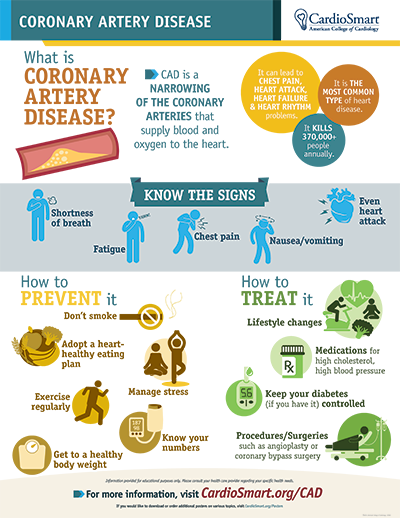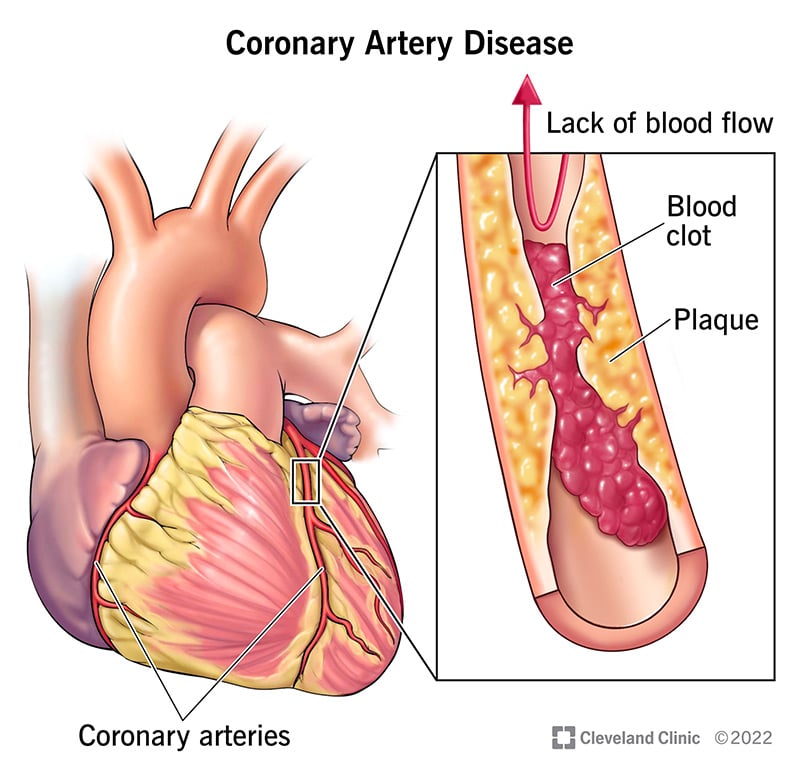
The most common symptom of Coronary Artery Disease is chest pain. It occurs when too much plaque builds up inside the arteries. This narrowing can prevent blood from getting to the heart muscle and the rest of the body. If not treated, it can result in a heart attack. If left untreated, it can lead to permanent heart damage. If you have symptoms of CAD, see your doctor. He or she can perform tests to determine the cause of the problem and give you the proper treatment.
A doctor can prescribe a prescription drug or perform a procedure called enhanced external counterpulsation. This procedure uses inflatable cuffs to squeeze blood vessels in the lower body to increase blood flow to the heart. This is a non-invasive procedure that can be used to treat chronic stable angina. This treatment is a viable option for patients with advanced coronary artery disease who are not responding to medication.
Other causes of CHD include obesity, physical inactivity, smoking, and unhealthy diets. If a family member has had coronary heart disease, you are more likely to get it yourself. In addition, other risk factors include high blood pressure, high cholesterol, and diabetes. If any of these are present in your life, you should contact your doctor immediately. The sooner you seek treatment, the better. It is important to understand the causes of IHD.
The progression of coronary heart disease is often progressive, and atherosclerotic plaques and inflammation lead to an increased risk of heart attacks. If you’re experiencing angina, it may be important to see your doctor regularly. The goal of treatment is to improve your condition and reduce your risk of developing angina. However, you can also try medications and get more information about angina prevention at https://astronomia2009.org.mx/. If you have had a heart attack or are experiencing chest pain, it is extremely important to seek medical attention.
The first step in treating CAD is understanding what is causing it. The condition is caused by a buildup of plaque in the arteries. This can lead to a heart attack, angina, or even a stroke. Fortunately, treatment options are available for people suffering from CAD. Many people find relief with medication, while others require surgery. Enhanced external counterpulsation is a procedure that uses inflatable cuffs to create natural bypasses around blocked coronary arteries.

Other treatments for coronary heart disease include increased external counterpulsation. This procedure involves the use of inflatable cuffs to compress vessels in the lower body. This technique can help improve blood flow to the heart and create a bypass around a blocked artery. In addition to medication, another treatment option is enhanced external counterpulsation. This is a non-invasive procedure.
Another treatment option for this disease is enhanced external counterpulsation, which involves the use of inflatable cuffs to compress blood vessels in the lower body. This method is non-invasive and can be used to treat chronic stable angina. The procedure is performed by a qualified doctor and is not painful. The procedure is non-invasive, but requires an MRI or angioplasty. Cuffs are used to help the patient get rid of chest pain.
The most common treatment for CAD is surgery. This is an invasive procedure, but it is not necessary. In fact, many patients are satisfied with this treatment because it is relatively painless and does not require a hospital stay. This is an easy way to save the patient from angina pectoris and improve the blood supply to the heart. It is a good choice for those who cannot undergo invasive procedures.
Some treatments are very effective. If you can avoid smoking and be physically active, you can reduce your risk of coronary heart disease. Exercise and a healthy diet are the most important ways to prevent coronary heart disease. Regular exercise can help improve blood flow in the arteries. Inflatable cuffs also improve blood flow to the heart. These procedures are often effective, although there are many other treatments for various cases of coronary artery disease.